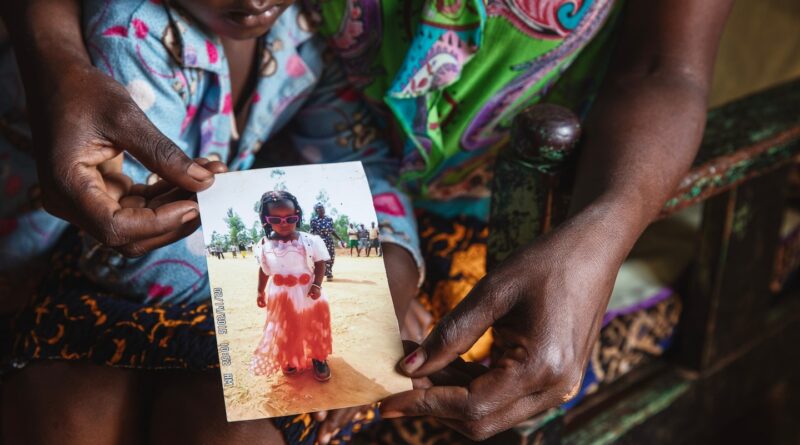Desperate and despairing, parents tap sleuth to find Kenya’s lost children
Then Maryana Munyendo stepped in. She heads Missing Child Kenya Foundation, an alliance of voluntary sleuths tracking down missing children. She plastered up posters and blasted social media. A stranger called two days later with the boy’s whereabouts.
Since setting up the group in 2016, Munyendo said she and her two-person team have reunited 1,055 children with their families out of the 1,551 missing children that parents have reported to her. Another 153 were sent to government homes and 28 were declared deceased, leaving 315 active files.
Munyendo, 41, set up the group after a 10-year-old girl went missing in the neighborhood near her office. Locals spotted the lost child after Munyendo put up posters, and the girl was reunited with her family after two days. More families reached out. Buoyed by early successes, Munyendo and her friend Jennifer Kaberi set up the foundation, running it on a shoestring out of Kaberi’s living room. Many of the children were runaways or the victims of parental abductions or traffickers. Some were simply lost and unable to tell strangers where they lived.
They started with posters, social media and the introduction of online hashtags and the keywords “MissingChildKE” to bring up names and posters. Then the group expanded, setting up Kenya’s first toll-free number for tracing missing children and badgering local news organizations to air features on the missing.
Just before the start of Kenya’s soccer championship match in 2019, her team arranged for players to hold up placards with pictures and names of missing children. The moment was broadcast on television and led to four reunions.
Their methods work. Blessing, now 15, disappeared twice more, and each time, strangers contacted Munyendo saying they had seen him. During his last disappearance, a comment by a stranger on the Missing Child Foundation Facebook post helped trace him to a hospital.
Another parent, George Ouma, 51, said Munyendo also helped recover his 17-year-old autistic son. He was missing for 10 days before a conductor noticed him at a bus terminal staring at a poster of his own face.
Kenya has an epidemic of missing children. Police did not respond to inquiries on statistics, and there’s no national database on missing children. But in May the cabinet secretary for labor and social protection, Florence Bore, said in a speech that 6,841 children were reported missing from July 2022 to May 2023. Only 1,296 have been reunited with their families, she said.
Most of the government’s budget for vulnerable children goes to the state-run Children’s Welfare Society, but while it runs homes, it does not conduct investigations. The society relies on the police. But multiple families, like the parents of 3-year-old Monica Makhungu, said in interviews that police had done little and asked for money. Police did not respond to requests for comment.
The girl disappeared in 2016 while playing in her Nairobi neighborhood. Playmates said they saw a man give her a bottle of water and carry her away. Her father, Enock Mudavadi, went to police, but he says they repeatedly asked him for money. Friends searched the area and found one of Monica’s pink shoes a few kilometers from her house. Weeks later, police said they had no resources to continue searching and asked for money to fuel the police car. Desperate, Mudavadi said he sold everything he had. He spent so much time searching he lost his job.
Finally he turned to Munyendo, and she issued posters using forensic age progression technology, which produces updated identikits of the disappeared, provided by the Italian Missing Children Institute. But Monica was never found.
Even after 1,500 more cases, Munyendo said quietly, “I still cannot forget about Monica.” Despite setting up the toll-free number, she will never change her personal phone number, she said, in case one of the old leaflets is found and someone calls with information about the girl.
Munyendo works closely with Kenya’s Directorate of Criminal Investigations, which launched an Anti-Human Trafficking and Child Protection Unit in 2016. Many of their cases involved parental abductions and child trafficking. The unit’s chief, Mueni Mutisya, said, “People like Maryana fill in the gaps. Sometimes we also ask Maryana to post for us the pictures of the missing. They publish the information, and people often contact her.”
Munyendo is tackling a major global problem. The International Centre for Missing and Exploited Children says only 45 countries have specific legislation or policies concerning missing children, although other laws can apply. Athena Morgan, the center’s Africa head, said most African nations do not keep records and the problem is rarely a government priority.
But Munyendo’s success has inspired others. She set up a webinar for Africans working on missing children and met Ghanaian journalist Regina Asamoah, who set up Missing Children Ghana in 2020. The next year Asamoah released a documentary featuring more than 30 missing children, some of whom had been living in orphanages for a decade. It became a series. Families told the stories of their lost children, and those who had been reunited shared their stories. One boy was reunited with his family after 14 years. He’d gone missing at age 3.
So far, the Ghana group has reunited 203 children with their families in two years and is searching for 660 others. Asamoah also met the police chief. Ghana set up its first missing people unit last year.
The work is never easy. This past summer, Munyendo’s toll-free number was cut off because they could not pay the bill, and it was out of service until an anonymous well-wisher paid the outstanding bill this month. Last year she could not give her volunteers bus fare or lunch money, so now they work from home to save costs. In November, their office roof collapsed. Yet she carries on. This autumn, in a shared Nairobi workspace, she stared at a photo of 3-year-old Daniel Yasin Meke on the flickering screen of an old computer. He was last seen a year ago near his Nairobi home. There had been no leads. She reposted his photograph anyway.
“We never give up,” she said.




